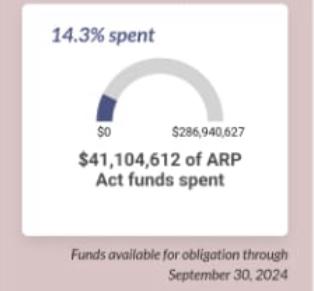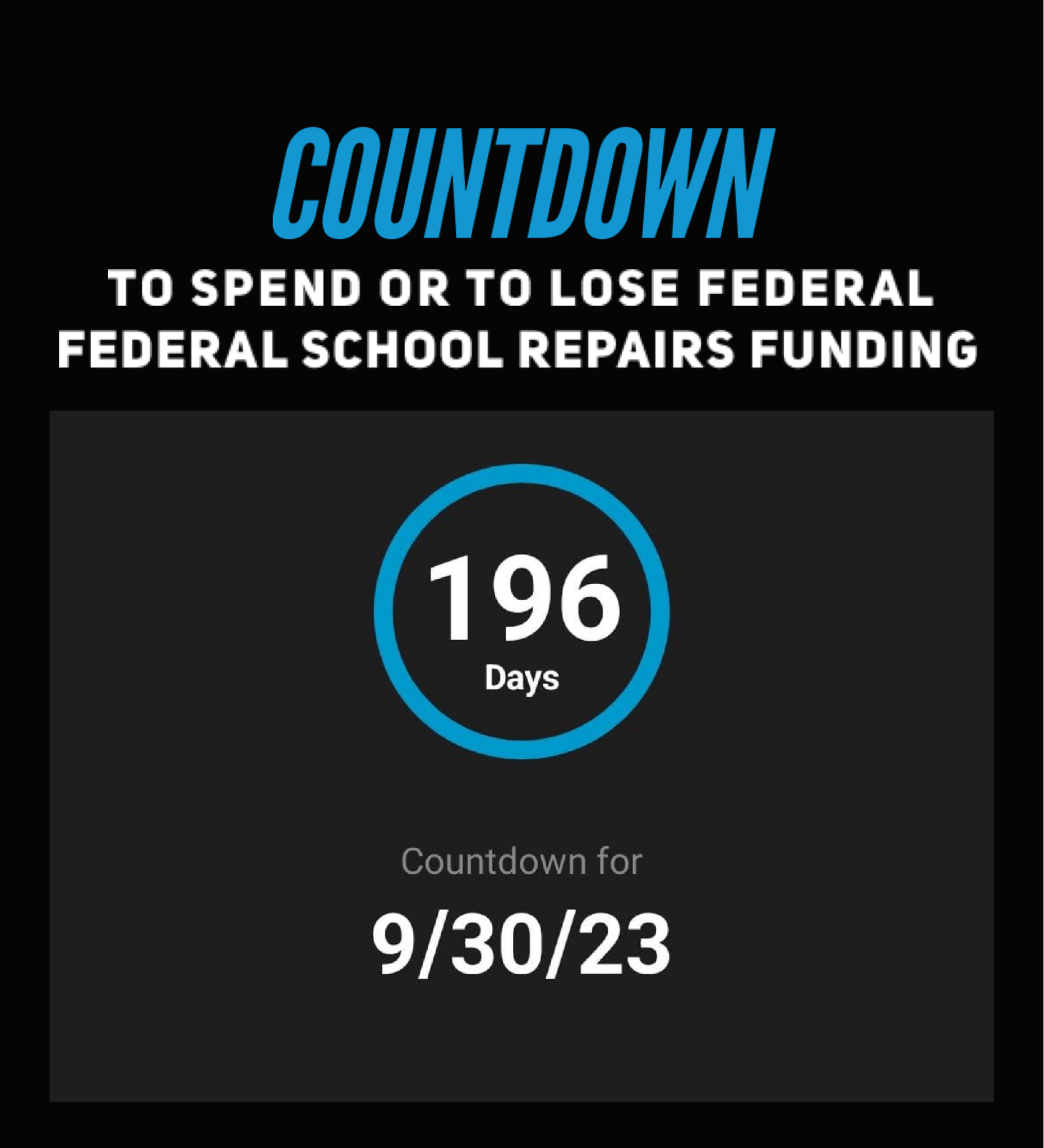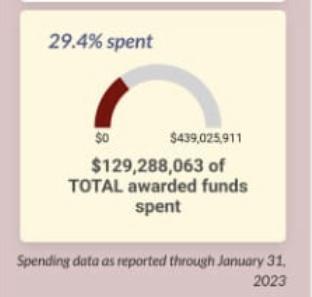Here’s the real reason for the pay raises, and the governor’s about-face on who is responsible for spending federal pandemic funds
If you wondered why Gov. Lou Leon Guerrero spent the entire education portion of her state of the island address making the case that education is not her problem, but the legislature’s, here’s the reason Kandit found:
There are $338,365,057.56 in federal Education Stabilization Fund grants GovGuam has thus far failed to spend to improve schools. And, according to real-time data provided by the U.S. Department of Education, more than $240 million of those grants that have been sitting in the bank must be spent by September 30, 2024, or the money will be returned to the federal government. Another $60 million must be spent by September 30 this year, or just north of six months away.
Former Congressman Michael San Nicolas fought for and secured these funds for Guam during the pandemic. It is the executive branch’s responsibility – as the governor has claimed time and again about federal pandemic funds – to expend these monies.
Kandit Friday attempted to get this information from the office of the superintendent of education, but our email was not answered. Among the questions in that email were how long GDOE and the governor’s office have known about this problem.
This is not the first time GovGuam experienced such a crisis. In early 2011, then-GDOE superintendent of education Nerissa Underwood came clean to newly-sworn Gov. Eddie Calvo that GDOE was in jeopardy of losing $100 million in federal school repair grants if it did not obligate (contract out) that money by December 31, 2011.
Mr. Calvo had to assign members of his staff and analysts from the Department of Administration and the budget office to help GDOE. They barely made the deadline, and actually did lose tens of millions of grant dollars that could have fixed schools.
The problem is that the Guam Department of Education does not have the wherewithal or the capacity to obligate and spend that kind of money within the deadline. And it is questionable whether anyone in the government does, considering the constraints of the procurement process.
It appears this is the real reason why the governor, in January, called for pay raises under the General Pay Plan and solely cited the need for the procurement of school repairs and the staff needed to get that done as the reason for the raises. It also explains why the governor attempted to throw the issue of school repairs squarely into the court of the legislature, casting herself far from the blame, when the government loses the money to the deadlines.
“Senators, there was a time when the Organic Act and the laws of Guam would have made me clearly responsible for the state of public education in Guam,” the governor stated in the portion of her state of the island address, where she began to shift responsibility for the crisis to senators. “But that time no longer exists.”
 The legislature of 22 years ago, she said, “sought and secured an amendment to the Organic Act of Guam, making DOE a creature of local statute, not an instrument of any Governor’s executive branch. From that point forward, the legislature would decide … the method and manner by which schools should be repaired.”
The legislature of 22 years ago, she said, “sought and secured an amendment to the Organic Act of Guam, making DOE a creature of local statute, not an instrument of any Governor’s executive branch. From that point forward, the legislature would decide … the method and manner by which schools should be repaired.”
“I urge this body to act with the clear authority only it has,” she told senators, who appeared to be as confused about the left-field statements as the public. “Fix procurement law, raise the salaries of technical staff in bidding and spec writing, so they can issue contracts, and give DOE the resources it needs to truly invest in our classrooms.”
But neither Ms. Leon Guerrero nor the officials of the GDOE had stated this concern publicly prior to her state of the island address. Senators, despite being kept in the dark, have been asking executive branch officials about the non-spend of these funds; and now are in a frantic rush to fix the problem the administration has kept from them.
 Senators over the past several weeks have introduced three bills dealing with the dilapidating and unsafe conditions of public schools; one measure addresses the school repairs procurement issue directly.
Senators over the past several weeks have introduced three bills dealing with the dilapidating and unsafe conditions of public schools; one measure addresses the school repairs procurement issue directly.
Sen. Chris Barnett, who chairs the legislative committee on education, introduced Bill No. 29-37, which would speed up GDOE’s deadline to get schools to meet sanitary and safety code requirements, or face shutdown.
Sen. Chris Duenas introduced Bill No. 32-37 that would give back to GDOE $30 million the governor spent from federal education pandemic funds on non-school repairs.
Sen. Sabina Perez introduced Bill No. 46-37, which would expedite the procurement process for federal education school repairs funding. It should be noted that in 2011, the legislature attempted to make such a concession, but ran into snags with whether the U.S. DOE would allow short cuts to the procurement process.
“I am … a proud co-sponsor of Senator Barnett’s bill and look forward to the discussion on Senator Perez’s bill as well,” Mr. Duenas said in a news release today.
“I think it’s entirely plausible that Adelup cooked this whole thing up so they can blame their loudest political opponent, Sen. Chris Barnett, who chairs the education committee,” Mr. Duenas told Kandit in an in-studio interview Friday. The senator’s suspicions are borne from Adelup’s strange pivot on the responsibility of school repairs toward senators. “I mean, it just came out of nowhere,” Mr. Duenas said, adding, “and this is the problem with not talking to us. This is the problem with not being transparent, and wanting to horde all the money. Now we can all see this is a huge problem. We’re going to roll up our sleeves and try to fix this thing.”
Late Friday, Mr. Barnett wrote an emphatic letter to Speaker Therese Terlaje imploring her to call emergency session for senators to consider these three bills.
Mr. Terlaje granted the request and called senators to session Monday.
“I am hoping we can move thoroughly and expeditiously to debate and pass these measures,” Mr. Barnett said. “I believe they will set into motion the solutions public school stakeholders have waited decades for. The testimony we heard on Friday during the Roundtable was overwhelmingly in support of Bill 29 and the much-needed drastic changes it would make to finally bring our school facilities into compliance with basic health and safety guidelines. GDOE originally wanted 20 years to comply with school sanitation rules, and the Acting Superintendent has asked us for another year, but the People of Guam are tired of excuses and delays. I know this Legislature is moving forward with their blessing.”
The GEDA option
In 2011, among Mr. Calvo’s considerations were to transfer the administration of the school repair funds to the one government agency that has the bureaucratic tools to get the money spent more swiftly: Guam Economic Development Authority. The option was taken off the table once officials realized GEDA did not have an outsourced program manager at the time that could legally link with the GDOE in managing the grant funds.
GEDA today has such a consultant on board; but whether that consultant can handle this larger volume of unobligated and unspent grant funding is a different story from the lower amounts of 2011.









1 Comments
Frank Perez
03/19/2023 at 9:51 PM
The most basic responsibility of our government, specifically the executive and legislative and judiciary branches, are ensuring that the HEALTH, EDUCATION, and WELFARE of “we the people” are promptly taken cared off. I submit that our government is failing in all three. Our hospital is in shambles, our educational facilities are in serious disrepair, and our communities are being invaded by criminal elements whose hands are slapped and let go because of a dearth of prosecutors! Just who in the hell is our government serving? Their own self-interests?